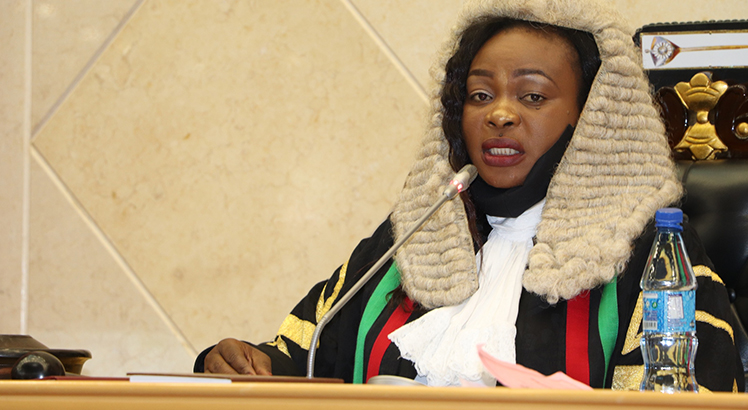Maize exports Raise eyebrows
Parliamentary Committee on Agriculture chairperson Sameer Suleman has described as “a huge mistake” government’s decision to allow maize exportation of up to 500 000 metric tonnes (MT).
The parliamentarian’s warning is shared by some experts in the agricultural policy and international trade fields, who pray that Capital Hill did its homework before allowing the external maize sales.
Last Wednesday, Secretary for Trade Christina Zakeyo announced commencement of issuance of maize export licences of 500 000MT, which by our rough estimates could rake in up to $100 million in foreign currency or around K82 billion.

But in an interview yesterday, Suleman—who is legislator for Blantyre City South East—said he is worried that the export incentive could increase domestic demand, elevate local retail prices and make it harder for the poor to afford the staple grain.
Suleman also warned that this season’s mess in the Affordable Inputs Programme (AIP) and uncertainty in rainfall patterns could hit national yield next season; hence, the need for Malawi to preserve what it has now to avoid importing when shortages strike.
He said: “With the current situation with AIP and how unpredictable the rains have become, we do not need to export maize. Let the government advise Admarc to buy that maize and store it.
“The current situation should show us that we may be expecting hunger next year for even at the moment we are hearing of areas that are already experiencing hunger. What we may get from the sales would be peanuts compared to the benefits of [keeping the maize in the country],” he said.
Over one million people in Malawi are experiencing high levels of acute food insecurity despite the country recording maize surpluses at national level, according to humanitarian agencies.
But while commending government for lifting the maize export ban that was in force for roughly five years, the Grain Traders and Processors Association do not sound too excited: low stocks among its members, weak price competitiveness coupled with soft export demand gives the grouping pause.
In an interview last week, the association’s chairperson Grace Mijiga-Mhango said as of two weeks ago, they had 53 000MT of maize in their warehouses.
She said the association could also mobilise 100 000 to 150 000 MT from its major private sector players and local farmers.
But this would not be even half of the export quota that government has allowed.
And even if they were to raise the whole 500 000 MT, Malawi may not be price-competitive enough in the regional markets, she worried.
Said Mijiga-Mhango: “The capacity to possibly meet demand may be there, but the market does not seem to be open enough as countries seem to be comfortable with what they have.
“Around this time in the past, countries like Mozambique would open up in terms of demand, but now that is not the case. Even if the market may open up, we fear Zambia may surpass us as they have more maize than us and it is cheaper.”
The association’s figures indicate that maize prices are highest in Rwanda, ranging from $280 to $285 (about K228 618 to K232 000) per MT; $250 to $267 (about K204 000 to 218 000) per MT in Kenya; $200 to $250 (about K163 000 to K204 000) per MT in Zimbabwe and Mozambique and lowest in Zambia at $150 to $180 (about K122 000 to K146 000) per MT.
In Malawi, maize is selling at $180 to $200 (about K146 000 to K163 000) per MT.
According to Famine Early Warning Systems Network (Fews Net), “maize supplies in southern Africa are at their highest levels in the past decade, driven by above average production during the 2020/21 production year and above average regional opening stocks in the marketing year”.
South Africa, Zambia, Malawi, and Tanzania have maize surpluses in the 2021/22 season while Zimbabwe and Mozambique are self-sufficient in maize, says Fews Net.
Angola has a minor maize deficit while “structurally grain deficit” Botswana, Lesotho, Namibia and Eswatini and southern DRC will continue to source maize from regional markets.
But with South Africa and Zambia much better positioned geographically and economically to supply the countries in need of the grain, Malawian traders could find it tough to penetrate there both logistically and in terms of pricing.
Meanwhile, Mwapata Institute—an independent agricultural policy think-tank—says export windows such as the one on maize must be more predictable than equivocal.
The institute’s executive director William Chanza, in an interview last week, said that while exports of goods, including maize, are good for foreign exchange earnings and provide a market for surplus commodities, he hoped that government did thorough homework to avoid food insecurity in the future.
But Lilongwe University of Agriculture and Natural Resources lecturer in international trade, policy and commerce Horace Phiri said while exportation is likely to impact local market prices, it may not have a dent on national food security.
He said: “It is indeed clear that during the 2020/21 harvest the country recorded a surplus meaning the domestic demand is less [than usual], so I would like to believe that they want to offload the surplus, on the international market.
“However, this must have been done earlier because this means the maize is no longer with the farmers, but with traders or those that hold stocks. We anticipate that when they offload maize on the international market, sometimes the price goes up because that way you are reducing what you have on the market.
“In terms of the food situation, we [don’t] expect much change, but this could potentially affect local [retail] price of maize,” he said.
In the 2020/21 agricultural season, Malawi’s total maize harvest was at an estimated 4.5 million MT.
Malawi’s annual maize requirement is projected at 3.1 million MT, which means the country has 1.4 million MT in net maize supplies.
But with Malawi’s post-harvest maize losses estimated at around 23 percent, the actual surplus could be much lower than advertised.





